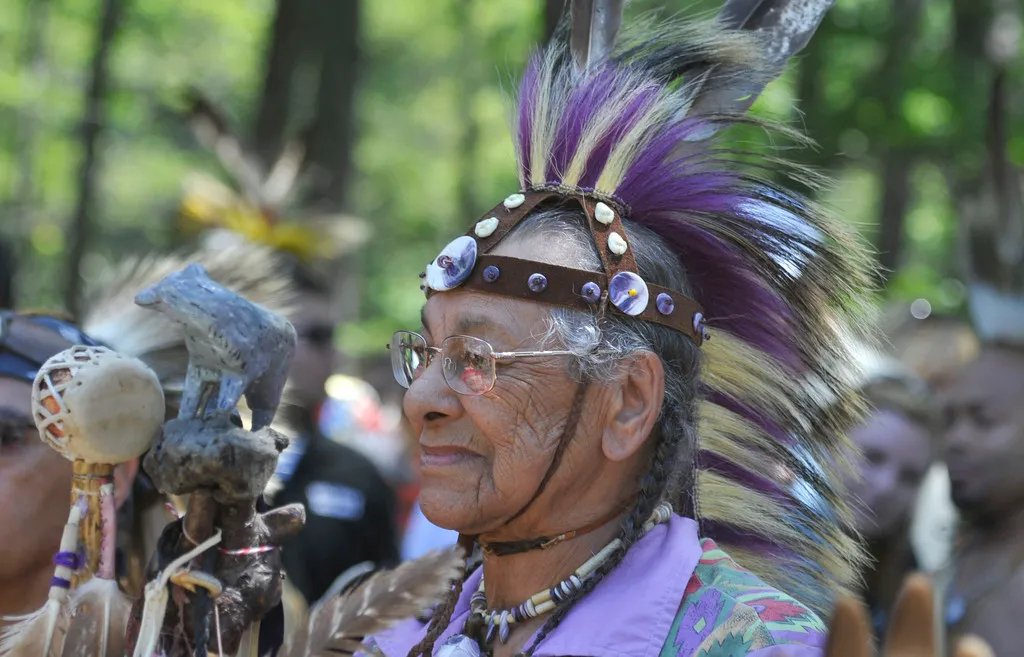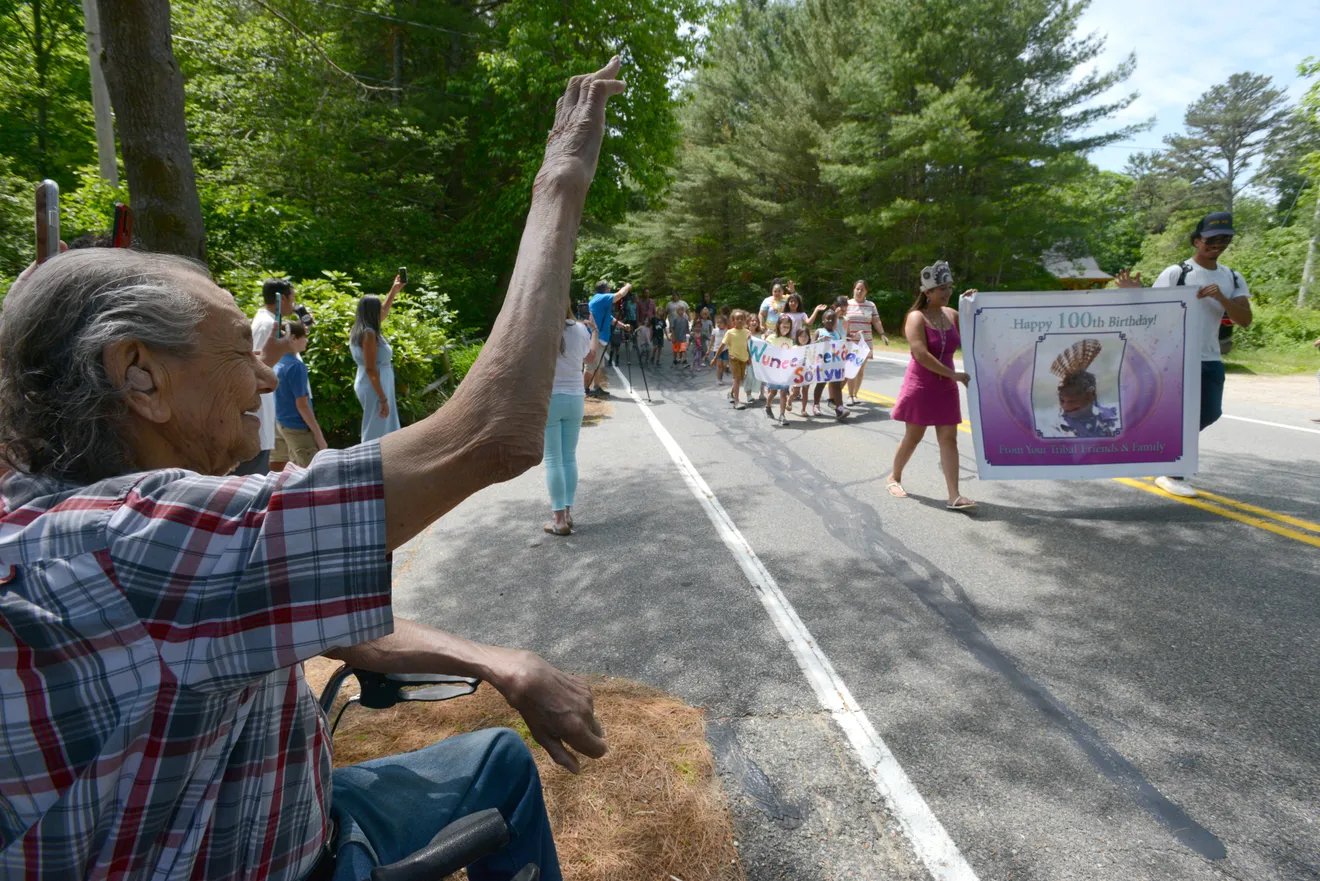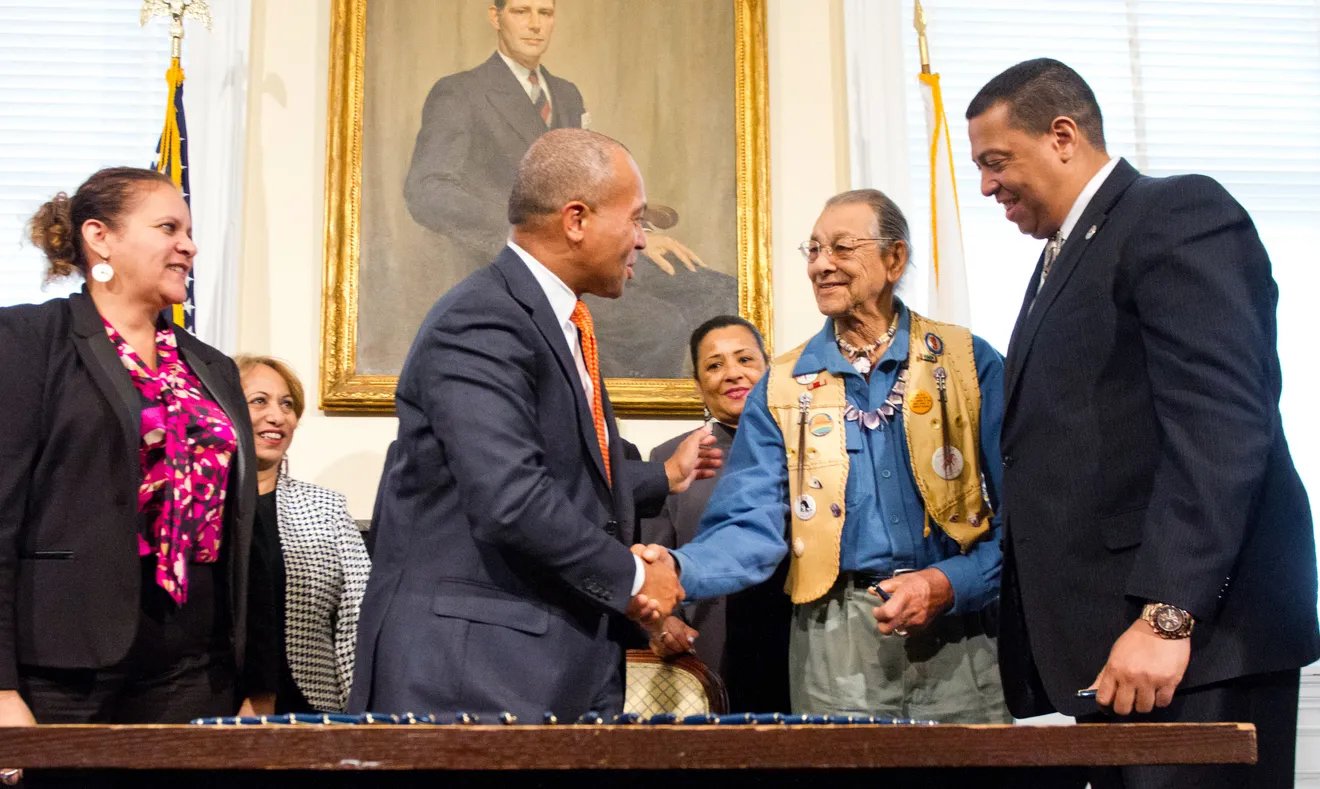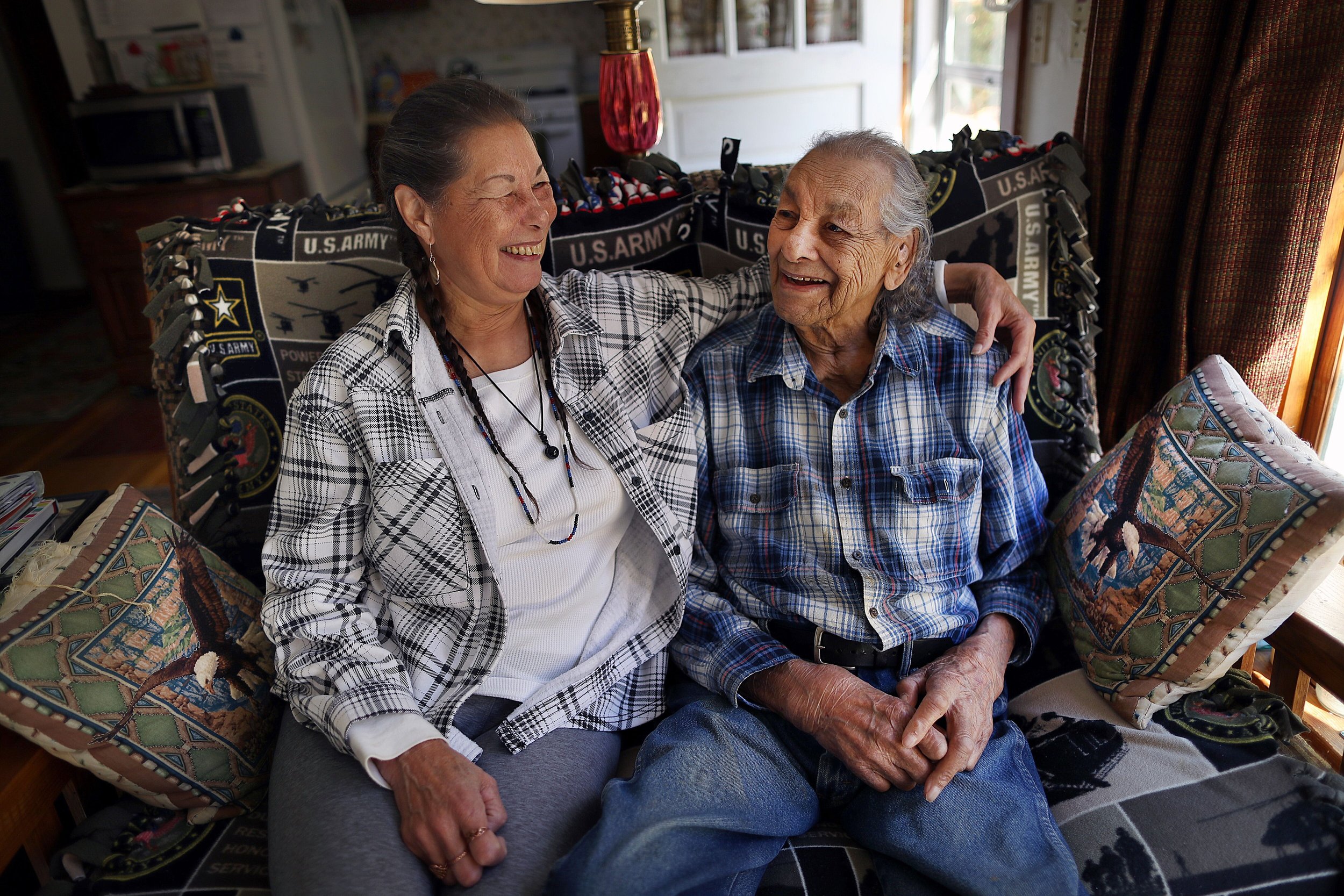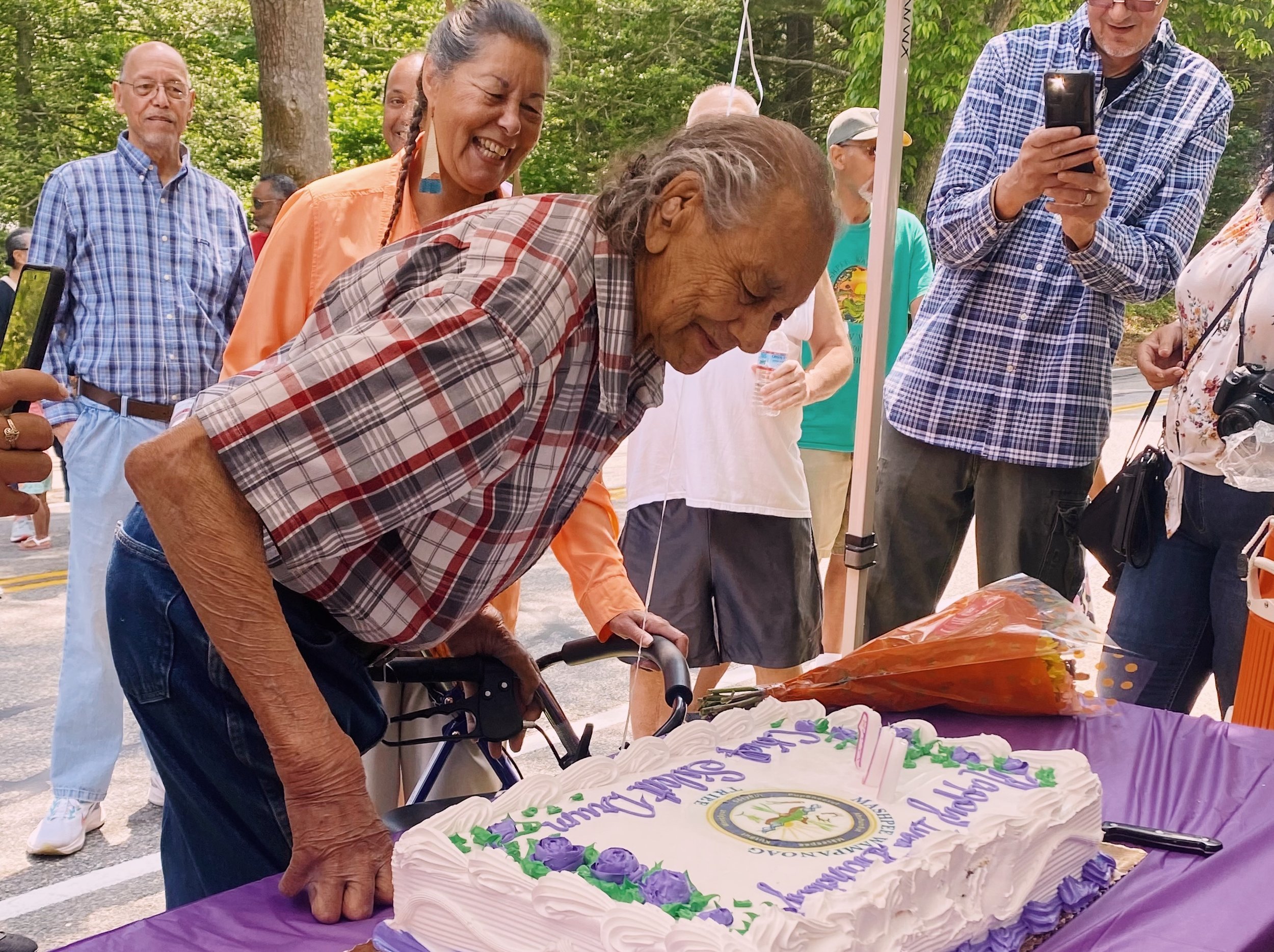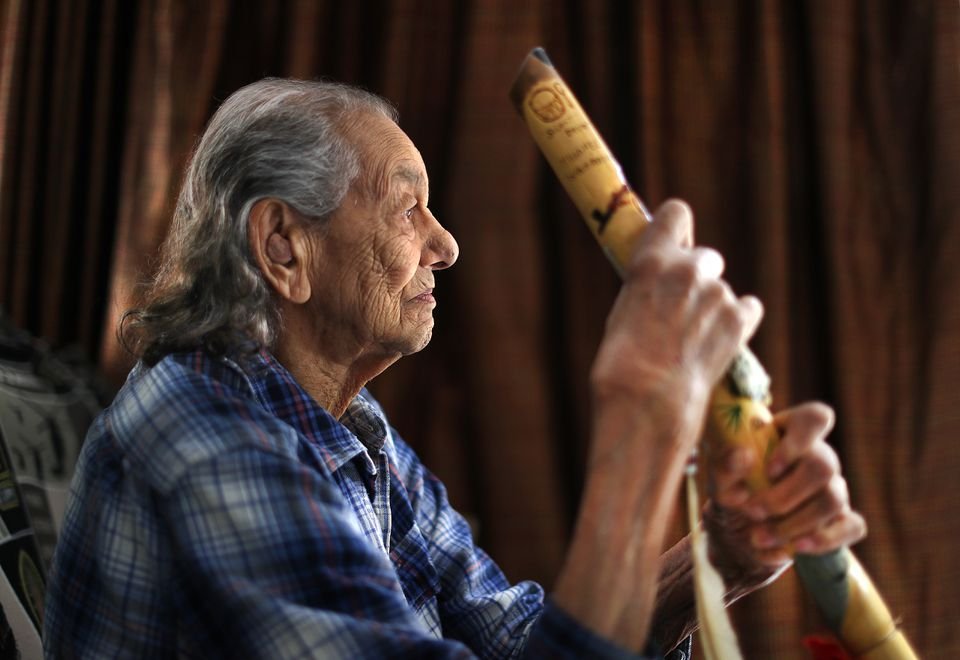Remembering Chief Vernon “Silent Drum” Lopez
Sunlight trickled through the trees, and a warm, spring breeze swept across Marlene Lopez' yard as she remembered her father Sôtyum Vernon “Silent Drum” Lopez, chief of the Mashpee Wampanoag Tribe.
Vernon, also known as "Bunny," died at Falmouth Hospital on April 3, due to health complications, including double pneumonia and sepsis. He was 100 years old.
“He drew his last breath at 12:15 in the afternoon,” Marlene said.
Several days before his death, Vernon told Marlene he was ready for the Creator to take him home. There were moments, she said, where she heard him speaking to the ancestors.
“He was telling them that he had a good life,” Marlene said. “These were peaceful moments of acceptance."
What was Mashpee like 100 years ago?
One of nine children, Vernon was born to Isaac and Emiline (Brown) Lopez at his family home on Lovells Lane in Mashpee on June 16, 1922.
Growing up, everyone knew one another in Mashpee, Vernon said in a 2022 interview with the Times. The population was almost entirely Wampanoag, he said.
Tribal families lived off the land – hunting for deer in groups, fishing for trout, and shellfishing in Popponesset Bay, Vernon said. When the weather turned warm, families could mostly be found in and around Mashpee River.
"We all lived along the river, ate out of the river, drank out of the river, bathed out of the river," he said. "We used it for almost everything we did."
One of Vernon’s favorite things to do was to fish for herring in the spring, said Guy "Soaring Eagle" Cash, medicine man for the Mashpee Wampanoag Tribe. Vernon had a connection with the water and said the herring were the circle of life, Cash said.
“Just before he went to the hospital, I told him the herring were headed this way,” he said. “He said, ‘yep, they are’ I told him, 'I saw four. They’ve got their scouts going up the river, Chief.’”
Just after his 20th birthday, Vernon was drafted into the Army and headed to boot camp in Louisiana. From there, he was sent to Virginia Harbor to learn how to scale ships.
After infantry and military police training, Vernon shipped out of New York and traveled to England, along with three other ships chock full of young men. As a member of the 214th Military Police, he participated in evening motorcycle convoys that ushered goods across the English countryside.
On June 6, 1944 — a date known as "D-Day" — Vernon joined roughly 156,000 American, British and Canadian forces that fought German soldiers off the coast of France’s Normandy region.
Allied military units successfully drove German troops back. Vernon, then 22, went on to fight in the Battle of the Bulge that started on a wintry Dec. 16, 1944. D-Day and the Battle of the Bulge are among the major World War II battles in Europe.
After completing his service, Vernon moved back to Mashpee, and found a job working for Avon Cut and Die factories in Brockton, Quincy and Boston. During that time, he met and married Mary (Stanley) Lopez in 1947. The couple had two children — Marlene and Ralph Lopez. Described as a free spirit, Ralph Lopez died after a battle with bone cancer in 1992.
Vernon and Mary raised their children in Holbrook and moved to Mashpee where Vernon and his brother-in-law Jack “Johnny” Stanley built a ranch-style home in 1971. In 1982, the pair built a home for Marlene on land Vernon acquired through auction, Marlene said.
Vernon served on the board of the first Mashpee Wampanoag Tribal Council established in 1972 and was a member when the council petitioned for federal acknowledgement in 1974 and filed a claim for the return of ancestral land in Mashpee in 1976, according the Mashpee Wampanoag Tribe website.
Vernon eventually joined the Sandwich Fish Hatchery, operated by the state, and retired at age 70.
His wife, Mary, who was a master gardener, photographer and the Indian education director in Mashpee, died in 2006.
Laying Chief Silent Drum to rest
As tribal leadership declared April 6, a “Day of Mourning” out of respect for their chief, Marlene organized Vernon's end-of-life service.
“He never discussed what he wanted," she said, "He would always say, 'just put me in the ground.’”
Almost immediately after his death, Vernon's family initiated a fire in his front yard. It's tribal tradition to hold a fire between the time of death until a family member is buried or cremated.
Family members kept vigil day and night to keep the flames going, Marlene said.
"The fire brings us all and the ancestors together, to help honor the spirit they are taking home," she said.
Vernon was laid to rest at the Old Indian Meeting House in Mashpee. Dressed in his regalia: a breech cloth, leggings, a vest, his tobacco pouch and a choker. He was lowered into the ground wrapped in a blanket, with his traditional head piece resting on his chest.
“We all shoveled dirt onto him and covered him completely,” Marlene said. “It was really beautiful.”
During the service, she said, John Brown, medicine man for the Narragansett Tribe, presented a 100-year-old pipe, which was smoked to help heal the community.
“It felt appropriate to use it. Everything happened in this space of time as it was meant to,” she said. “Everything took care of itself — all the guidance — and all the directions.”
Cash said the pipe had never been shared with the Wampanoag people before.
“Years ago the Narragansett and the Wampanoag fought and here they are offering their 100 year-old-pipe to the Wampanoag nation,” he said. “We honor the Narragansett for that.”
Lopez is remembered as a gentle leader
For over 100 years the tribal nation has enjoyed and benefitted from the presence of a chief, Brian Weeden, chairman of the Mashpee Wampanoag Tribe, said.
“Silent Drum has been a constant rock for our people. Sharing wisdom and, most importantly love among his people," he said. "We will do our best to honor his life in our actions today and for future generations."
David Weeden, tribal historic preservation officer for the Mashpee Wampanoag Tribe, said his community lost a treasure.
"He was a wealth of information," he said. "And was untainted by his service and experience in World War II."
David Weeden was also in awe of the chief's longevity. Lamenting on the the 400th commemoration of the Mayflower, it's incredible to think about how Vernon lived through so much colonization and development across the Cape, he said.
"He saw things happening in real time. But still remained humble, caring, compassionate and generous," he said. "He was a human being that epitomized our traditional values."
How will the Tribe raise a new chief?
Vernon was chosen and raised as chief after the passing of Chief Vernon “Sly Fox” Pocknett, in 1998.
In 1956, before Pocknett, Earl 'Flying Eagle' Mills was also chosen as chief. Traditionally, each leader holds the title for life.
In 2022, Vernon retired his title of chief, and relinquished his responsibilities to tribal clan mothers, who represent eight Mashpee Wampanoag families. Marlene is a clan mother and represents the Lopez family as part of the rabbit clan.
On May 6, Marlene said, the tribe will raise a new chief. Four candidates will stand before the tribal community, and each tribal member will stand behind the candidate they support. Those with the fewest number of people standing behind them will then fall behind the new chief — bringing unity to the tribe, Marlene said.
Unity, said Cash, is what Vernon always wanted for tribal members. He lived by example.
"He always welcomed everybody," he said. "I don’t think he’s a silent drum anymore. His drum beats loud now. It beats loud for the people.”
Rachael Devaney writes about community and culture. Reach her at rdevaney@capecodonline.com. Follow her on Twitter: @RachaelDevaney.

